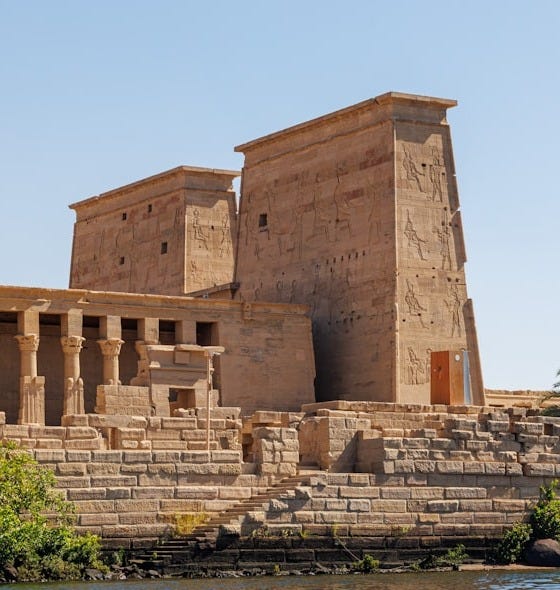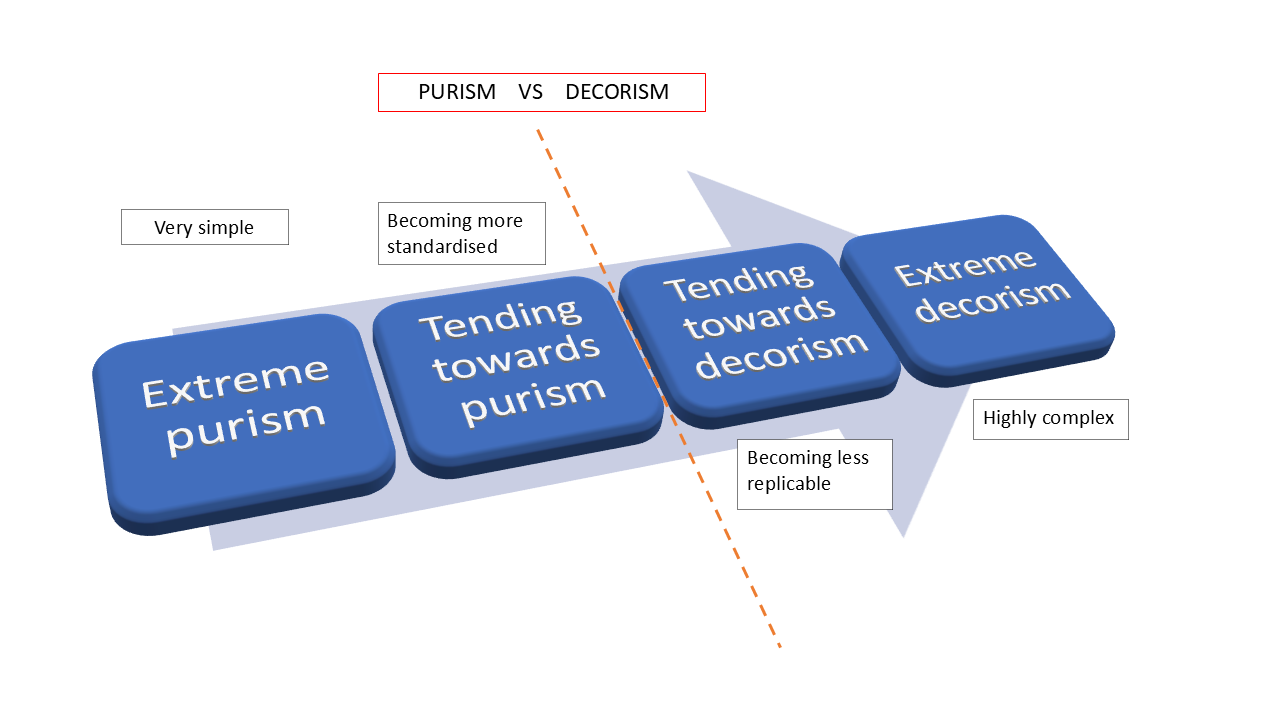In my last post (Building #49) I wrote about planning out a new book that will include a theme about the balance between purism and decorism in building design (call it architecture if you prefer).
The following summary has been written by AI, based on an outline that I provided it with (including the diagram/schematic that I’ve inserted below) and after some tweaking of the formality of expression used. I’m intrigued to know what readers thoughts are about it as a piece of computer think.
You can think of the relationship between purism and decorism in building design as a spectrum, not a strict either-or. Different styles, choices, and influences fall somewhere along this line. Purism and decorism are like two ends pulling in opposite directions, and where a project lands depends on things like context, what the designer wants, and what technology makes possible.
This spectrum helps us see how some buildings lean more towards purism—simple forms, easy to copy, and super efficient—while others go for decorism, with lots of ornament, uniqueness, and complexity inspired by art or nature. Most real-world designs don’t sit at the extremes, but instead find a balance between practical needs and creative expression, between what’s standard and what’s one-of-a-kind.
The factors that pull a design one way or the other—simplicity, standardisation, how easily it can be copied, or how complex and unique it is—don’t work alone. They mix and interact, shaped by new materials, digital tools, and changing tastes. For example, advances in AI and generative design mean we can now create buildings that are both highly standardised and wildly intricate.
So, this whole idea of a schematic isn’t just a one-off drawing; it’s more like a toolkit for thinking about how and why buildings end up the way they do. As things change, so will the balance between purist and decorist ideas, opening up fresh possibilities for how we design and build in the future.
How about some concrete (great building word!) examples?
Extreme purism might be the bold, monolithic features of an Egyptian temple.

Or perhaps it is aspects of Brutalist architecture with the smallest hint of imagery.

Extreme decorism might be the delicate, tooth-like spires of a gothic cathedral.

Or a highly expressive Postmodernist work using new materials.

The big challenge, which is at least partly the vision for the book, is describing what lies between these two extremes.


The AI structure is very clear and simple for me, and intuitive for me a non-expert. Feels like it could be a 3 axis model with materials/ technology/ digitalization as the third one